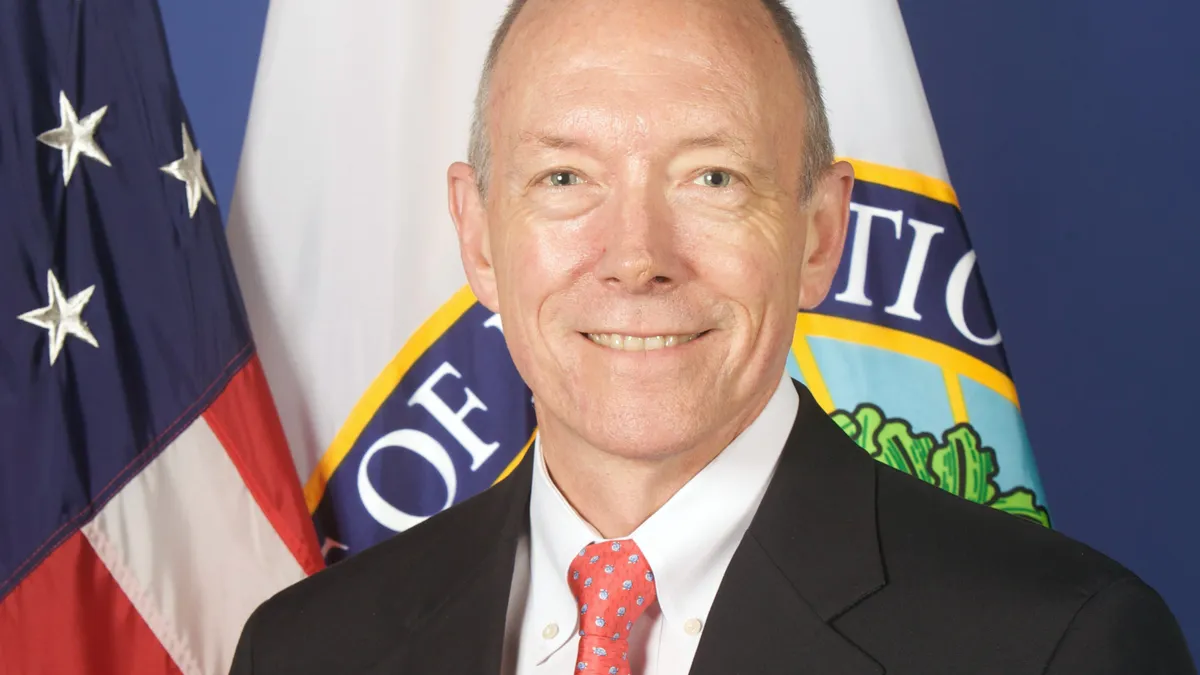With strong remarks on diversity and inclusion, U.S. Department of Education Undersecretary Ted Mitchell laid out four tenets of the Obama administration’s approach to revitalizing higher education in its final 200 days in office.
“Let’s think about where there are holes, and how we can fill those holes. And who is missing from this debate,” said Mitchell, who opened the department’s "Reimagining Higher Education" convening at Georgetown University last month in front of dozens of policy makers, education executives and advocates assembled from around the country.
“This is an awfully white room. As we think about moving forward, building an ecosystem, we need to make sure that the people who are building that ecosystem are parts of the communities for whom we are building it.”
Mitchell’s remarks were the foundation for a day-long series of conversations and panel discussions on the changing landscape of postsecondary access and delivery models. The former Occidental College president, who was confirmed as U.S. Education Undersecretary in 2014, discussed at length the DOE’s role in providing enhanced student loan and grant funding as the first stage in working with systems and institutions to promote innovation in affordability and rigor for all students.
Referencing four areas of federal focus for the upcoming academic year, Mitchell charged participants to dialog about improving teaching and learning models, creating new business models, re-imagining education credentials and refining ways that schools could use big data to improve access and learning outcomes.
Some officials cited concern about the pace of innovation and its clash with traditional higher education outcomes. Boston College Provost and Dean of Faculties David Quigley discussed the importance of connecting academic development to industrial needs as a kick starter for academic innovation, a specific focus that has helped to galvanize faculty engagement and to transform community value at his institution.
“We’ve been enriched by thinking about what we can learn about the labor market demands, not turning the core curriculum into job preparation, but in helping our students craft the language and find the vocabulary that links work in philosophy and the social sciences to what the labor market is going to demand of them as they get beyond Chestnut Hill,” he said.
Labor market focus also emerged as a key element of credentialing agencies, an educational alternative likely to increase dramatically in the next few years as college affordability demands grow along with the need for graduates to fill tech jobs.
Lumina Foundation Strategy Director Holly Zanville discussed the organization’s plans to develop a national registry for credential opportunities that brings together providers, colleges, universities, industry groups and certification and standards boards to help make sense of the meaning and value of credentials.
Zanville said the registry will also spur the development of applications to show employers, colleges, students and stakeholders the range and value of credential options in connection to workforce development.
Rufus Glasper, president of The League for Innovation in the Community College, said that credentialing opens more discussion about defining access for a broad range of students, especially around access to learning technology.
“The technology imperative is across all of the educational sectors, and for community colleges which educate more than 13 million students in the U.S., access is a large issue,” Glasper said. “When you think about students going home, many of our students can’t sustain; they may not have the same Internet access there as they do on campus. When community college students have conflicting job schedules or life gets in the way ... I believe that we need to think about where they are coming from and [allow] our students to earn stackable credentials to come in and out of the workplace in very specific industries.”
Mitchell noted increasing access to learning technology is a central part of the Department of Ed’s National Educational Technology Plan, which this fall will yield a higher education supplement for online learning, continuing education and open-source course materials.
“We want to put a marker down in the last fall of this administration, about the community that you all have built, a community that will take this work forward in building an ecosystem that serves all students, particularly as the nature of those students changes -- moving from the typical 18-year-old here at Georgetown, to the more than half of American students who begin their work at community college to the 21-year-old military veteran or the 34-year-old single parent. Those are the college students of today, and increasingly, the college students of tomorrow.”

















